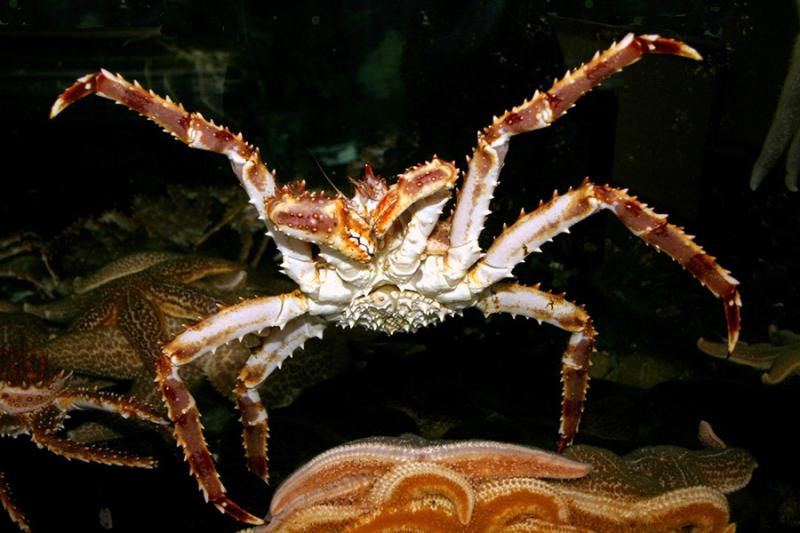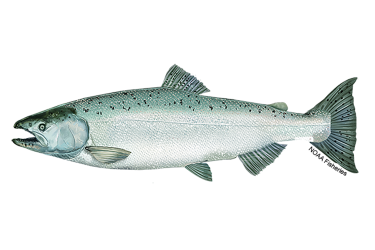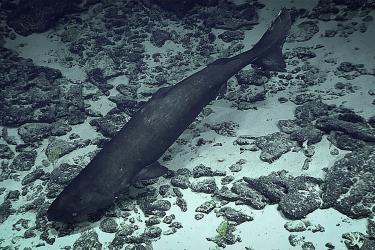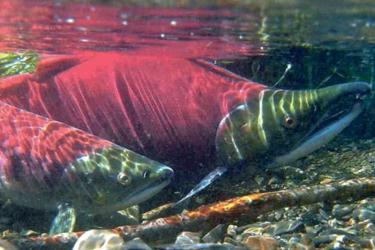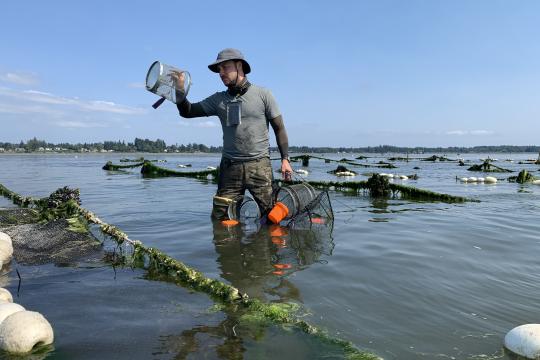The U.S. Army Corps of Engineers (USACE) recently released for public comment a General Permit for Floating Mining Operations in Alaska State Navigable Waters, including marine waters. The permit includes new measures to protect red king crab and salmon which migrate through Norton Sound and into rivers to spawn. NOAA Fisheries reviews public notices and offers expertise to the USACE for the conservation of living marine resources.
Floating mining operations use a dredge in nearshore waters to ‘vacuum’ up gravel and sand substrates which are then sifted to retain gold. The new protections restrict mining operations during certain spring and summer months when juvenile red king crab settle to the seafloor. Mining operations will also be restricted in waters deeper than 30 feet and within one nautical mile of stream mouths to avoid areas where salmon concentrate.


In recent years, researchers and scientists from the University of Alaska, Fairbanks and the Alaska Fisheries Science Center used regular baseline sampling, analysis, monitoring, and new side-scan sonars technologies to inform studies on the benthic environment and red king crab in Norton Sound. Results showed that habitats deeper than 30 feet of water take more time to recover, while shallower habitats are routinely disturbed by natural events and recover quickly. Surveys also showed that crab larvae settle in nearshore substrates. These findings were used to better inform managers with the most recent science for the EFH consultation process.
NOAA Fisheries has provided USACE with EFH conservation recommendations relating to suction dredging operations in Norton Sound since 1999.
